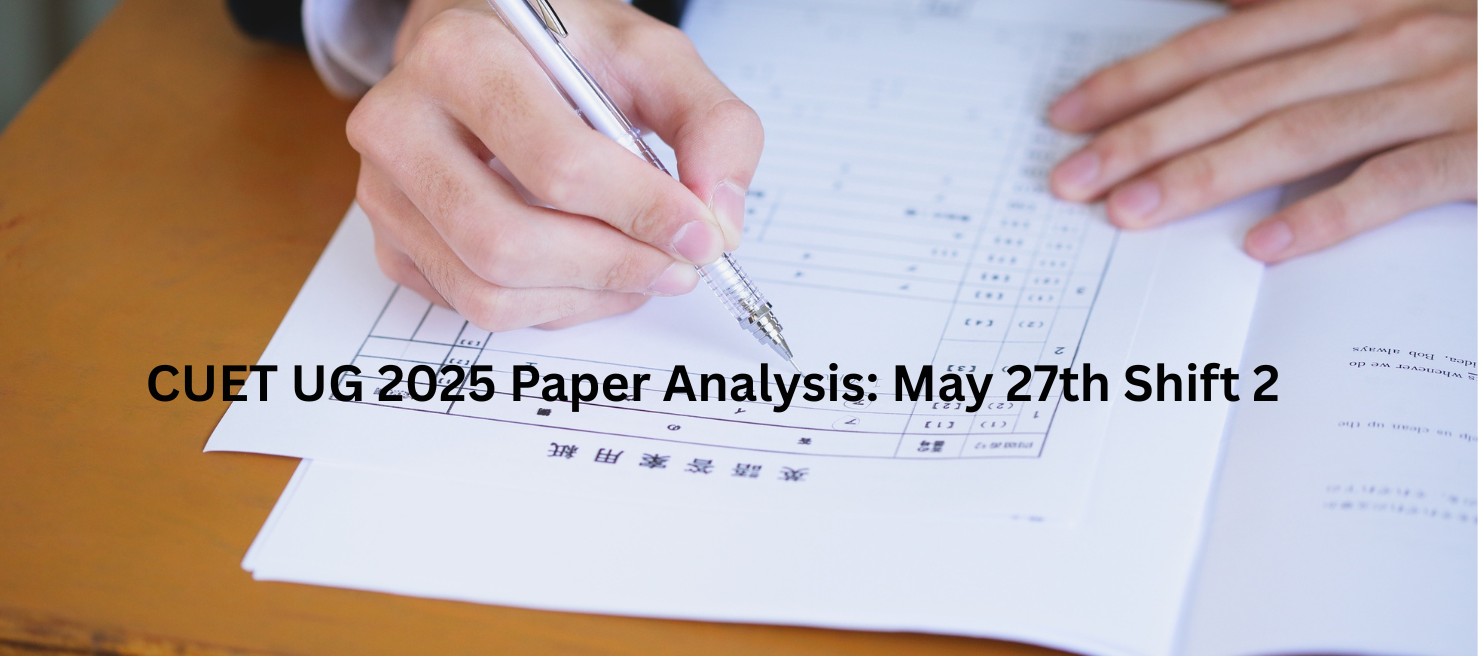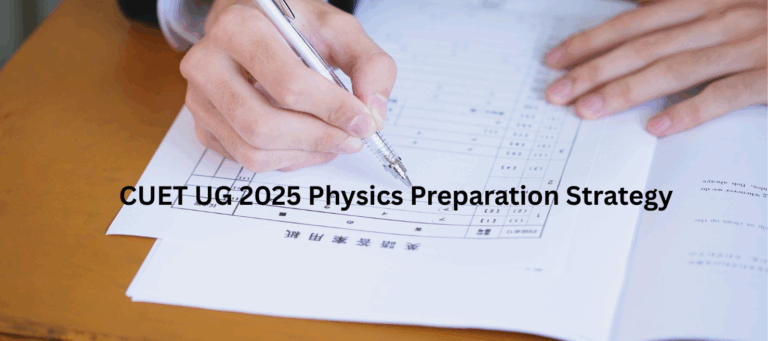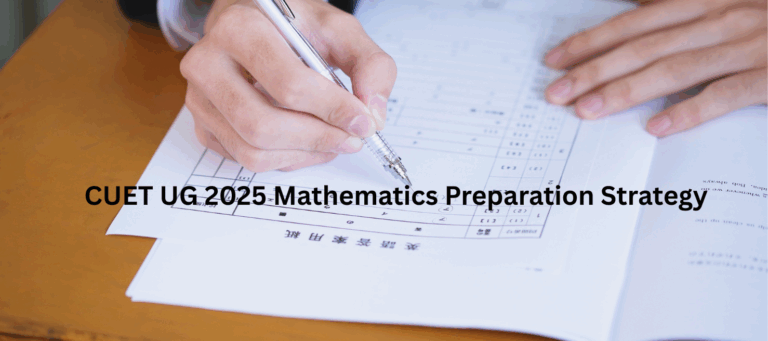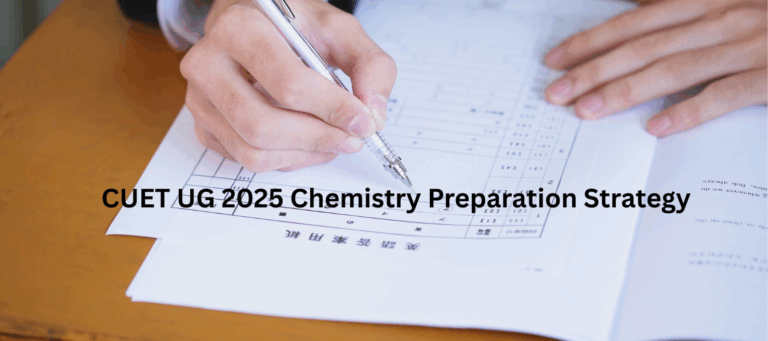
The CUET UG 2025 May 27th Shift 2 exam covered a diverse range of subjects, including General Aptitude (GAT), Physics, Chemistry, Political Science, and Biology. This shift’s question paper was reported by students to be balanced and aligned closely with classroom teachings and previous year patterns. The overall difficulty ranged from easy to moderate, with a healthy mix of theory, numerical, and factual recall questions.
In this CollegeDost analysis, we break down each subject’s key topics, question types, and student feedback to help aspirants understand the exam pattern and prepare effectively for upcoming shifts.
- May 13th CUET UG Paper Analysis Shift 1
- May 13th CUET UG Paper Analysis Shift 2
- May 14th CUET UG Paper Analysis Shift 1
- May 14th CUET UG Paper Analysis Shift 2
- May 15th CUET UG Paper Analysis Shift 1
- May 15th CUET UG Paper Analysis Shift 2
- May 16th CUET UG Paper Analysis Shift 1
- May 16th CUET UG Paper Analysis Shift 2
- May 19th CUET UG Paper Analysis Shift 1
- May 19th CUET UG Paper Analysis Shift 2
- May 20th CUET UG Paper Analysis Shift 1
- May 20th CUET UG Paper Analysis Shift 2
- May 21st CUET UG Paper Analysis Shift 1
- May 21st CUET UG Paper Analysis Shift 2
- May 22nd CUET UG Paper Analysis Shift 1
- May 22nd CUET UG Paper Analysis Shift 2
- May 23rd CUET UG Paper Analysis Shift 1
- May 23rd CUET UG Paper Analysis Shift 2
- May 24th CUET UG Paper Analysis Shift 1
- May 24th CUET UG Paper Analysis Shift 2
- May 26th CUET UG Paper Analysis Shift 1
- May 26th CUET UG Paper Analysis Shift 2
- May 27th CUET UG Paper Analysis Shift 1
- May 28th CUET UG Paper Analysis Shift 1
- May 28th CUET UG Paper Analysis Shift 2
- May 29th CUET UG Paper Analysis Shift 1
- May 29th CUET UG Paper Analysis Shift 2
- May 30th CUET UG Paper Analysis Shift 1
- May 30th CUET UG Paper Analysis Shift 2
- May 31st CUET UG Paper Analysis Shift 1
- June 2nd CUET UG Paper Analysis Shift 1
- June 2nd CUET UG Paper Analysis Shift 2
- June 3rd CUET UG Paper Analysis Shift 1
- June 3rd CUET UG Paper Analysis Shift 2
CUET UG 2025 Exam Overview
Below is the exam overview of CUET UG 2025.
| Exam Particulars | Exam Details |
| Total Subjects Offered | 37 (13 Languages + 23 Domain Subjects + 1 General Aptitude Test) |
| Medium | 13 Indian languages (Assamese, Bengali, English, Gujarati, Hindi, Kannada, Malayalam, Marathi, Punjabi, Odia, Tamil, Telugu, and Urdu) |
| Subjects to Choose | Up to 5 subjects |
| Total Marks of CUET Exam | 250 |
| Questions per Subject | 50 Compulsory Questions |
| Marking Scheme | +5 for correct answer, -1 for incorrect answer, and no marks for unattempted questions |
| Exam Mode | CBT Mode |
| Duration | 60 minutes per subject |
Where To Check CUET UG 2025 Paper Analysis
If you’re looking to stay ahead with the latest and most reliable CUET UG 2025 Exam Analysis, click on the link below!
👉 Check CUET UG 2025 Exam Analysis on CollegeDost
As a trusted community for exam insights, Collegedost offers detailed, student-verified analysis for every shift and subject. You can easily access comprehensive breakdowns, difficulty level discussions, and expert tips all in one place. Check out Collegedost today to boost your preparation with authentic resources tailored just for you!
CUET UG 2025 Exam: Shift Timings Today
Check the CUET UG 2025 exam shift timings in the table below.
| CUET UG 2025 Slot Time for 27th May | Reporting Time | Gate Closing Time | Shift Timing |
| CUET UG 2025 Shift 1 | 7 AM | 8.30 AM | 9 AM to 12 PM |
| CUET UG 2025 Shift 2 | 1 PM | 2.30 PM | 3 PM to 6 PM |
CUET Exam Pattern 2025
The CUET UG 2025 exam is structured to assess various skills across multiple subjects. Below is a detailed breakdown of the exam pattern:
| Sections | Subjects / Tests | No. of Questions | Question Type |
| Section IA | 13 different languages (any one can be chosen) | 50 | Reading Comprehension based on different types of passages – Factual, Literary, and Narrative; includes Literary Aptitude and Vocabulary |
| Section II | 23 domain-specific subjects (choose as per eligibility) | 50 | MCQs based on the NCERT Class XII syllabus |
| Section III | General Test (for programs where it’s used for admission) | 50 | General Knowledge, Current Affairs, General Mental Ability, Numerical Ability, Quantitative Reasoning (up to Grade 8 level), Logical and Analytical Reasoning |
CUET UG 2025 Exam Analysis: Based on the Number of Attempts
Candidates can check the number of good attempts that they can expect in the exam from the following table.
| Subjects | Number of Attempts | Difficulty Level |
| General Aptitude (GAT) | 40-45 | Moderate |
| Physics | 45+ | Easy to Moderate |
| Chemistry | 40-45 | Moderate |
| Political Science | 45+ | Easy to Moderate |
| Biology | 45+ | Easy to Moderate |
CUET UG 2025 Exam Analysis: May 27 2025, Shift 2
The CUET exam date 2025 of May 27th, shift 2, for the GAT, Physics, Chemistry, Political Science, and Biology paper. As per the initial reaction of the students, the exam for the Shift 2 is considered to be easy to moderate. Check out the subject-specific analysis and weightage of each chapter.
CUET UG 2025 GAT Paper Analysis
Students found the CUET exam balanced across sections, with General Knowledge and Current Affairs being the largest portion, featuring around 15-20 diverse questions on topics like Mohenjo-Daro, WHO, international awards, and Indian geography. Many felt Quantitative Aptitude had fewer questions—about 8 to 12—covering classic topics such as Height & Distance, Profit & Loss, and Probability. Moreover, Reasoning was the second-largest section, including Seating Arrangement, Ranking, Directions, Coding-Decoding, Blood Relations, and puzzles like Mirror Image and Calendar questions. Overall, students noted that practice helped a lot, especially for the Reasoning and Maths questions, while the GK section required broader awareness.
| Section | Topics Covered | Details |
| Quantitative Aptitude | Height & Distance, Profit & Loss, Time & Work, Ratio, AP/GP, Statistics (Median), Geometry (Cylinder Volume/Surface Area), Probability, Permutation & Combination, Number System, Linear Equations | ~8–12 questions total; some repeated patterns; specific questions on Median, Cylinder, Permutations, Number Series |
| Logical Reasoning | Seating Arrangement (including circular), Ranking (Top-Bottom, Left-Right), Directions, Coding/Decoding, Blood Relations, Analogy (e.g., months), Calendar, Clock, Mirror Image, Non-Verbal Reasoning (Embedded Picture/Hidden Figure) | Reasoning had 2nd highest number of questions after GK; ~12-15 questions including various types |
| Analytical & Verbal Reasoning | A mix of analytical and verbal reasoning questions | Included within the reasoning topics |
| General Knowledge / Current Affairs | Static & Current Affairs (15-20 questions) including Mohenjo-Daro, WHO, Hockey Championship Years, International Prizes, Indian States bordering Bhutan, Books & Authors (Match the Column), Polity, Total Internal Reflection | GK portion was the largest with around 18-20 questions; diverse topics covered |
General Awareness-Chapterwise Weightage
The importance and distribution of the various topics within the field of general awareness are highlighted in this section. Overall assessments related to general awareness can be enhanced by recognizing the importance given to each chapter.
| Category | Expected Questions |
| Geography | 7 |
| Science | 4 |
| Personalities | 4 |
| Polity | 3 |
| Defence | 2 |
| Awards | 2 |
| Sports | 1 |
| Currency | 1 |
| Miscellaneous | 1 |
Logical reasoning-Chapterwise Weightage
| Topic | Expected Questions |
| Visual Reasoning | 4 |
| Series | 2 |
| Coding-Decoding | 2 |
| Arrangement | 2 |
| Clocks | 2 |
| Analogy | 1 |
| Family Tree | 1 |
| Calendar | 1 |
| Data Sufficiency | 1 |
| Directions | 1 |
| Statement-Conclusion | 1 |
Numerical Ability-Chapterwise Weightage
| Topic | Expected Questions |
| Time and Work | 2 |
| Ratio | 2 |
| Simplification | 1 |
| Fractions | 1 |
| HCF-LCM | 1 |
| Problems on Age | 1 |
| Percentage | 1 |
| Profit, Loss & Discount | 1 |
| Simple Interest | 1 |
| Area | 1 |
| Volume | 1 |
| Speed, Time, Distance | 1 |
| Mean & Mode | 1 |
| Triangle | 1 |
| Trigonometry | 1 |
CUET UG 2025 Physics Paper Analysis
Students found the Physics paper was easy to moderate, with a noticeable increase in numerical questions, especially from Modern Physics, Wave Optics, and Current Electricity. Many appreciated that numericals were straightforward, making answers clearer compared to conceptual questions, which were fewer and often appeared in matching formats. Students also observed a shift from a heavy Modern Physics focus in earlier papers toward more questions on Electrostatics and Current Electricity recently. They felt that upcoming exams might emphasize Electrostatic Potential, Capacitance, and topics like EMI and AC, so they planned to focus more on these. Overall, students found the paper balanced, but it is advised to prepare well for both numerical and conceptual questions to avoid confusion under exam stress.
| Topic | Details / Focus | Notes |
| Modern Physics | Concept-based numericals, Threshold Frequency (e.g., Lithium work function), previously of high weightage, now slightly decreased | Questions 13-19 mostly Modern Physics; includes Semiconductor Devices, Atom, Nuclei, Dual Nature (earlier papers) |
| Wave Optics | Included in concept and numerical questions; moderate focus | Some papers focused more on Ray Optics |
| Current Electricity | Conceptual and numerical questions on Cell Combination (parallel), Resistivity (temp. dependence), Conductivity units, Drift Velocity, Current Density, Mobility | Increasing weightage recently, including Force on Point Charge (F=eq) |
| Electrostatics | Increasing emphasis, especially Electrostatic Potential and Capacitance; advised to focus on Potential-related topics | May become dominant in upcoming exams |
| Numerical Questions | More numerous than conceptual; generally straightforward, less tricky, but may challenge under stress | Seen as less confusing due to clear right/wrong answers |
CUET Physics – Chapterwise Weightage
The table below highlights the importance and distribution of different subjects within the Physics subject.
| Sections | Number of Questions |
| Electrostatics | 8 |
| Current Electricity | 7 |
| Magnetic Effects of Current and Magnetism | 8 |
| Electromagnetic Induction & A.C. | 6 |
| Electromagnetic Waves | 1 |
| Optics | 8 |
| Dual Nature of Matter and Radiation | 5 |
| Atoms and Nuclei | 4 |
| Electronic Devices | 3 |
CUET UG 2025 Chemistry Paper Analysis
Students found the Chemistry paper mostly moderate in difficulty, with around 35 straightforward questions and 8-10 that were moderately difficult or tricky. Many reported that Organic Chemistry focused on acid strength comparisons, reaction mechanisms like SN1/SN2, and identifying functional groups, often using names instead of structures. However, Physical Chemistry had numericals on colligative properties, kinetics, and electrochemistry that students found manageable. Students noted helpful matching-type questions on vitamins, amino acids, and IUPAC naming. Overall, repeated patterns and clear concepts made the paper accessible, though a few less-prepared topics added some challenge.
| Topics | Details / Focus | Notes |
| Organic Chemistry | Acidic strength comparison (Benzoic, Propanoic, Methanoic acids), Extensive use of names vs structures, SN1 & SN2 reactivity, Reaction sequences (Hofmann), Solubility order, Lucas reagent, Cannizzaro, Iodoform test, Para/Ortho directing groups | Many questions on acid/base strength and reactivity order, reaction mechanisms, and test identification |
| Physical Chemistry | Colligative properties (osmotic pressure, freezing point depression, vapor pressure), Numerical on degree of dissociation and molar conductance, Chemical kinetics (rate law, Arrhenius eq.), Electrochemistry (Nernst, Lead Storage Battery) | Numerical-heavy section with straightforward calculations |
| Inorganic Chemistry | D & F Block properties (magnetic moment, oxidation states), Coordination compounds (IUPAC names, hybridization, medical uses), Conversion reactions, Use of EDTA and DMG, Enzymes matching | Paragraph-based questions, emphasis on coordination compounds, and qualitative analysis |
| Matching/ Conceptual | Vitamins, Amino Acids, IUPAC Naming, Enzyme functions, Lead Storage Battery components | Matching and recall-based questions, often from recent class discussions |
| Repeated Questions | 5-6 exact repeats from recent sessions, many others based on commonly discussed topics | Students found repeated patterns helpful |
CUET Chemistry-Chapterwise Weightage
The table below highlights the importance and distribution of different subjects within the Chemistry subject.
| Topics | Number of Questions |
| Solid State | 4 |
| Electrochemistry & Solutions | 5 (Case study – Slightly difficult) |
| Chemical Kinetics | 2–3 |
| P Block Elements | 2–3 |
| D and F Block Elements | 5 (Case study – Easy) |
| Coordination Compounds | 5–6 (Moderately difficult) |
| Alcohols, Phenols, and Ethers | 4–5 |
| Aldehydes, Ketones, and Carboxylic Acids | 3–4 |
| Organic Compounds Containing Nitrogen | 4 |
| Polymers | 1–2 |
| Chemistry in Everyday Life | 1–2 |
CUET UG 2025 Biology Paper Analysis
Students found the Biology paper mostly easy, with questions closely aligned to known and revised topics. They felt comfortable with human reproduction topics like the menstrual cycle, spermatogenesis, and reproductive health methods such as IVF and IUDs. Genetics and biotechnology questions, including gene therapy, ECOR1, and autosomal diseases, were often matching-type and familiar from recent lessons. Also, there were Ecology questions on population interactions, energy flow (Lindeman’s Law). However, many reported that health-related questions covered HIV, immunity, and diseases. Though some students found viral names confusing. Overall, students appreciated the clear sequence-based and matching questions and felt well-prepared due to consistent class coverage.
| Topics | Details / Focus | Notes |
| Human Reproduction | Menstrual Cycle phases sequence, Spermatogenesis, Oogenesis, Male Accessory Ducts & Glands | Sequence-based questions |
| Reproductive Health | IVF, IUDs, MTP, IUI | Common reproductive health topics |
| Genetics & Biotechnology | Prototrophism, Gene Therapy (ADA enzyme), ECOR1 isolation, GEAC full form, Genetic material identification, Autosomal recessive diseases (Thalassemia), Transcription units, Pleiotropy, Incomplete dominance | Matching-type questions; experimental references like Harshey-Chase |
| Evolution | Geological Time Scale | Advised focus for upcoming exams |
| Health & Disease | HIV, Cancer cell conversion, Innate Immunity barriers, Malaria | Some confusion reported on viral names |
| Ecology | Population interactions, Exponential Growth conditions, Lindeman’s Law (10% energy rule), Pyramids, Food Chains, Decomposition factors, Biodiversity (Species Area Relationship), Ex situ Conservation | Matching and arrangement questions |
| Microbes | Biological Oxygen Demand (BOD) in Sewage Treatment Plants | – |
| Sexual Reproduction (Plants) | Microsporogenesis sequence | Sequence arrangement questions |
CUET Biology Chapterwise Weightage
The table below highlights the importance and distribution of different subjects within the Biology subject.
| Topics | Number of Questions |
| Applications of Biotechnology | 4 |
| Biodiversity and Its Conservation | 5 |
| Biotechnology: Principles and Processes | 4 |
| Ecosystem | 4 |
| Evolution | 4 |
| Human Health and Diseases | 4 |
| Human Reproduction | 3 |
| Microbes in Human Welfare | 3 |
| Molecular Basis of Inheritance | 5 |
| Organisms and Populations | 3 |
| Principles of Inheritance and Variation | 3 |
| Reproductive Health | 5 |
| Sexual Reproduction in Flowering Plants | 3 |
| Total | 50 |
CUET UG 2025 Political Science Paper Analysis
Students found the Political Science paper mostly easy, with many questions directly recalling important historical events, leaders, and political concepts they had studied. They felt confident answering questions on topics like the LTTE, the Two-Nation Theory, the Mandal Commission, and prominent leaders such as Atal Bihari Vajpayee and JP Narayan. However, questions on political institutions like NITI Aayog, SAARC, and international treaties were straightforward. Students also noted that topics like globalization, world social forums, and economic reforms were covered in a simple way. Overall, students appreciated the clear and factual nature of the questions, making the paper less stressful compared to earlier shifts.
| Topics | Details / Focus | Notes |
| Key Historical/Political Topics | LTTE (Liberation Tigers of Tamil Eelam), Two-Nation Theory (Muslim League support), Mandal Commission (1978, Janata Party), Atal Bihari Vajpayee (PM 1998-2004), Punjab Accord (1985), Non-Congressism (Ram Manohar Lohia), Total Revolution (JP Narayan), Emergency Period, Morarji Desai (PM post-1977), Congress President during Nehru’s death (K Kamaraj), Founder of DMK (Annadurai, 1949) | Focus on Indian political history and leaders |
| Political Institutions & Organisations | Replacement of Planning Commission by NITI Aayog, World Bank (logo-based questions), International Organisations, SAARC establishment (1985), Baltic Republic (Lithuania joining CIS 1992), Treaties (Lisbon, Maastricht, Paris, Rome), EU country accession chronology | Questions on global and regional institutions |
| Concepts & Movements | Globalization (McDonaldization as Cultural Similarity), World Social Forum (Opposing Neo-liberal Globalization), Westernization (Kurta with jeans), Economic reforms (LPG 1991), Satyagraha (1975 by JP Narayan) | Included cultural, economic, and social movement concepts |
| Miscellaneous | Seats in the first general election, Leaders like Ambedkar and Periyar, Chronological event arrangement | Questions involving recall and sequence |
CUET Political Science Chapterwise Weightage
The table below highlights the importance and distribution of different subjects within the Political Science subject.
| Chapters | Number of Questions |
| Recent Developments in Indian Politics | 8–9 |
| Challenges to the Congress System | 5 |
| Cold War Era | 3–4 |
| The End of Bipolarity | 2–3 |
| US Hegemony in World Politics | 2–3 |
| Alternative Centers of Power | 2–3 |
| Contemporary South Asia | 3–4 |
| International Organizations | 2–3 |
| Security in the Contemporary World | 2–3 |
| Globalization & Environment and Natural Resources | 6–7 |
Student Reviews For CUET UG 2025 May 27th Shift 2 Exam
Most students from different states found CUET UG 2025 Shift 2, which was held on May 27th, was easy to moderate. Here is a summary of what students perceived about the exam.
General Aptitude Test (GAT)
Student’s Feedback: One student said, “I found the GAT section to be moderately easy. The reasoning and language questions were pretty straightforward, but the quantitative aptitude questions felt a bit lengthy, so I had to be careful with my time.”
Physics
Student’s Feedback: “For me, the Physics paper was balanced but a bit on the moderate side. There were quite a few questions on Mechanics and Electrodynamics, and some of the numerical problems took more time than I expected.”
Chemistry
Student’s Feedback: As per the student’s report, Chemistry was the toughest part. Most questions tested conceptual clarity, especially in inorganic chemistry, and the numerical problems were tricky, which challenged the problem-solving skills.
Political Science
Student’s Feedback: As per the Students’ report, Political Science was manageable. Most questions were direct and from the NCERT syllabus. A few questions made them think a little deeper, but overall, it was good.
Biology
Student’s Feedback: One student has reported that, “Biology felt easier compared to other subjects, with many direct questions from the syllabus. However, the paper was a bit lengthy, so managing my time well was important.”
CUET UG 2025 Exam Day Guidelines
Given below are a few CUET UG 2025 exam day guidelines that students need to follow.
- Carry Only Required Items: Only take your printed admit card (with passport-size photograph), your valid photo ID (Aadhaar or PAN card), a transparent ballpoint pen, and a transparent water bottle. Candidates can check all the CUET exam details on the admit card and are advised to adhere to the instructions.
- Be On Time: Report to the exam center well in advance relative to your reporting time (7:00 AM for Shift 1 and 1:00 PM for Shift 2). If you are late, you will not be allowed to enter.
- Prohibited Items: Do not bring mobile phones, smart watches, electronic devices, bags, books, or food if not medically required (with documentation).
- Maintain Discipline: Be seated in your assigned seat, only do rough work on the sheets provided, and do not perform any unfair practice or make any noise in the exam hall.
- Time Management: It is a critical challenge across subjects, especially with lengthy sections like RC or Quant. It’s advised to tackle easy questions first.
- The Normalisation Factor: This factor will account for variations in difficulty across shifts. The focus should be on attempting as many questions with 100% accuracy.
CUET Dress Code For Females
| Category | Allowed | Not Allowed |
| Clothing | Half-sleeved, simple kurtis/tops | Full-sleeved, heavily embroidered, or layered clothing |
| Bottom Wear | Simple leggings, trousers, salwar | Skirts, jeans with extra pockets |
| Footwear | Slippers, flat sandals | Heels, closed-toe shoes, boots |
| Accessories | None | Jewelry (earrings, rings, bangles, bracelets, belts) |
| Electronic Items | None | Smartwatches, Bluetooth devices, and wired accessories |
CUET Dress Code 2025 for Males
| Category | Allowed | Not Allowed |
| Clothing | Half-sleeved, plain shirts or t-shirts | Full-sleeved shirts, layered clothing, and embroidery |
| Bottom Wear | Light trousers, simple jeans | Cargo pants, jeans with too many pockets |
| Footwear | Slippers, sandals | Shoes, sneakers, boots |
| Accessories | None | Watches, belts, caps, sunglasses, metallic items |
| Electronic Items | None | Smartwatches, Bluetooth devices, and wired accessories |
Things Allowed Inside the Examination Hall
- Transparent Water Bottle
- Admit Card (printed copy)
- Face Mask & Gloves (if applicable)
- Personal Hand Sanitiser (50 ml)
- Rough Sheets (provided by the exam centre)
- Passport-size Photograph (same as uploaded in the application)
- Simple Black/Blue Ballpoint Pen (if specified)
- Valid Photo ID Proof (Aadhar, PAN, Passport, etc.)
Things Not Allowed Inside the Examination Hall
- Books, Notes, or Any Study Material
- Mobile Phones & Smartwatches
- Wallets, Handbags, Sunglasses
- Bags, Pouches, or Any Items with Metal Components
- Electronic Gadgets (earphones, calculators, etc.)
- Jewellery, Caps, or Hats
- Food or Drinks (except water)
- Any Written or Printed Papers
What’s New In CUET UG 2025?
Check out some new changes introduced by UGC and which will be implemented from CUET UG 2025 onwards.
- Students can now take CUET UG exams in any subject, regardless of their Class 12th subjects.
- CUET UG will be conducted solely in CBT mode.
- CUET subjects have been reduced to 37 from 63. Teaching Aptitude, Entrepreneurship, and Legal Studies subjects has been removed.
- The duration of the test is 60 minutes for all the subjects.
- The GAT scores will decide the admission for the removed CUET subjects.
- There will be no optional questions.
Frequently Asked Questions
1. How many questions in the exam were reported by students to be directly from Previous Year Questions (PYQs) in GK and Current Affairs during CUET UG 2025?
According to student feedback, 15-20 questions were directly from Previous Year Questions (PYQs) in GK and Current Affairs during CUET UG 2025.
2. What is the CUET exam syllabus?
CUET exam syllabus has a language subject which has various types of passages, such as factual, literary, and narrative, etc., 5 domain subjects, and a section of GAT which assesses General Knowledge, Current Affairs, General Mental Ability, Numerical Ability, etc.
3. What topics were commonly seen in Physics papers during Shift 2 of 27th May, CUET UG 2025?
Topics like Threshold Frequency, Cell Combination, and Electric Field calculations were commonly seen in the Physics paper during Shift 2 of 27th May, CUET UG 2025.
4. What is the CUET exam pattern for each subject?
Each subject paper of the CUET UG exam pattern consisted of 50 compulsory questions. Students need to complete each paper within 60 minutes.
5. What topics were covered in Inorganic Chemistry during Shift 2 of 27th May, CUET UG 2025?
Inorganic Chemistry covered D & F block properties, coordination compounds, and enzyme matching, with some paragraph-based questions.






